ALIBABA IPO ROADSHOW: Here's Why Jack Ma Thinks You Should Buy Into The Alibaba IPO
Alibaba is the largest online and mobile commerce company in the world with 279 million active shoppers.

The value of goods and services transacted has reached $296 billion in the 12 months leading up to June 2014.
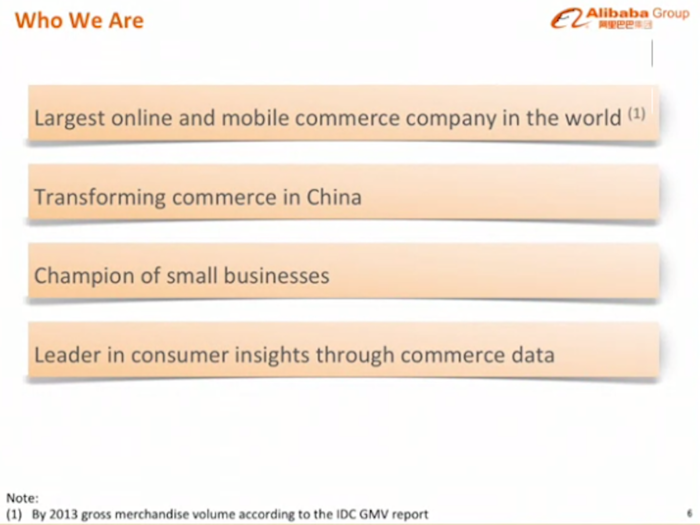
Alibaba aims to build the infrastructure for the future of e-commerce.
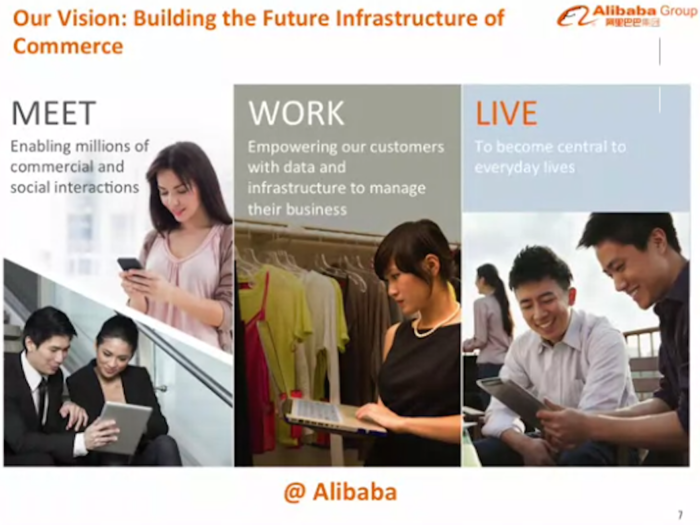
They also hope to offer an array of other products and services such as digital media and entertainment.
Alibaba sees a huge opportunity in China.
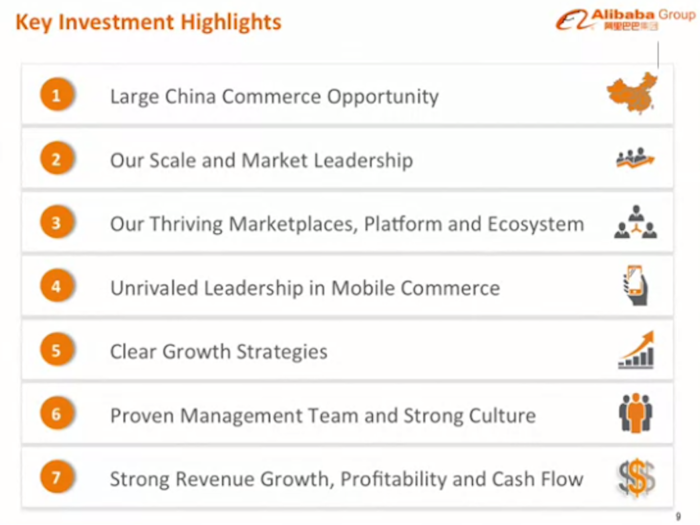
In 2014, China had 618 million internet users — this is tops in the world.
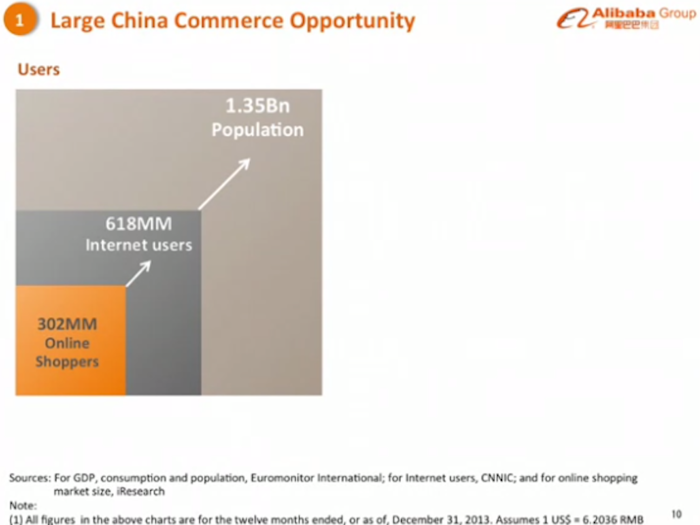
However, China still has a relatively low number of online-shoppers — around 302 million. Alibaba expects increased penetration of online shoppers.
In 2013, online shopping made up only 9% of the consumption economy in China.
Alibaba expects continued growth as China becomes a more consumer-oriented economy.
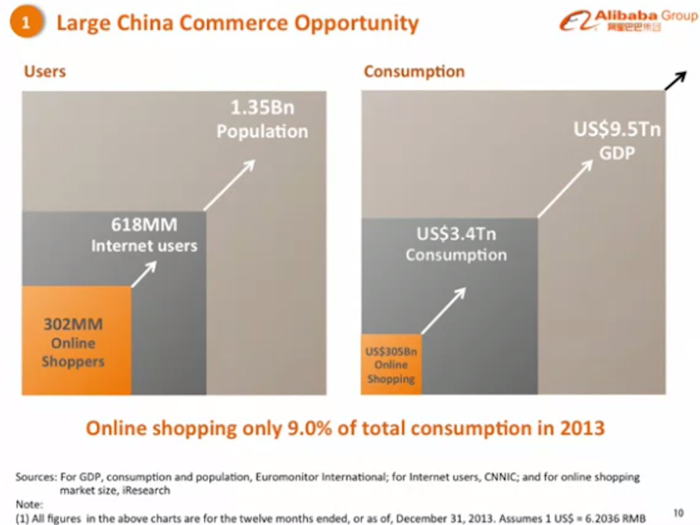
On a percentage basis, way fewer people go online and shop online in China than in the U.S.

And Alibaba sees this as an opportunity.
Alibaba is clearly the world's largest online retailer by gross merchandise volume.
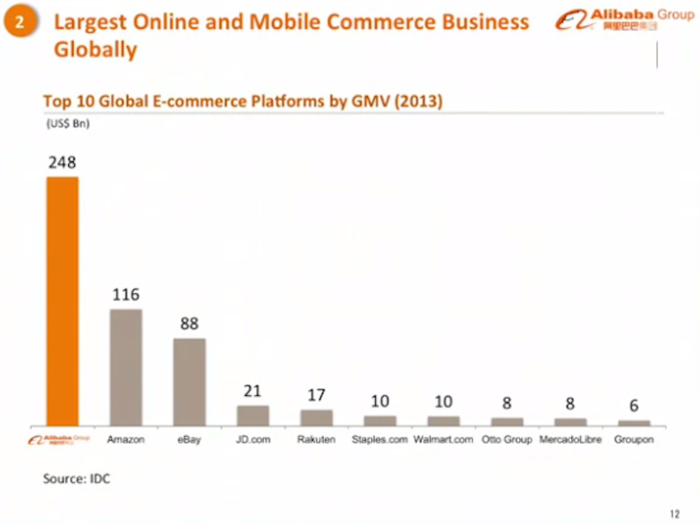
Compare that to mega giants like Amazon and eBay.
In the year ending in June, there were 279 million annual active buyers placing 14.5 billion orders on Alibaba.
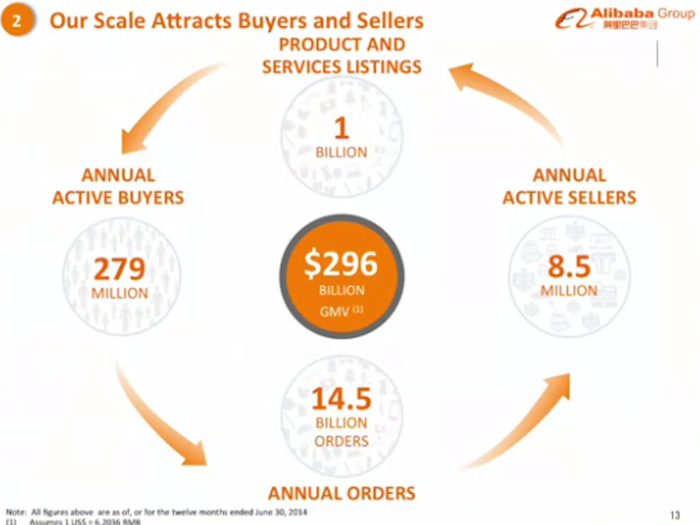
As of June 2014, there were over $1 billion products and services listed.
Alibaba connects buyers and sellers through six marketplaces.
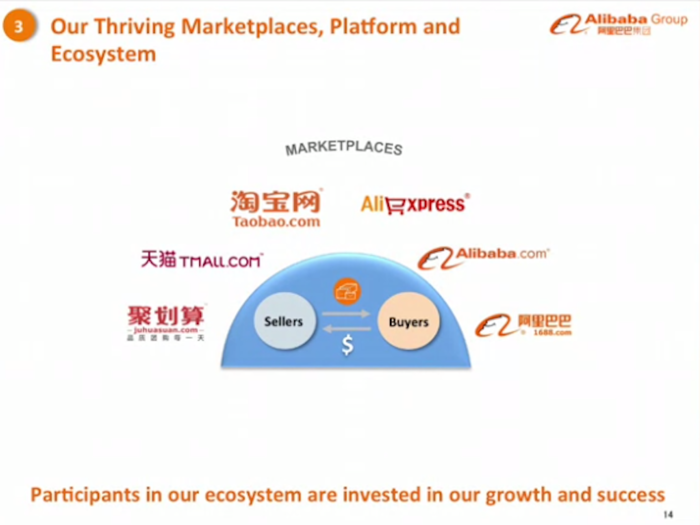
And there are loads of third party groups including payment, deliveries, marketing, and merchant support.
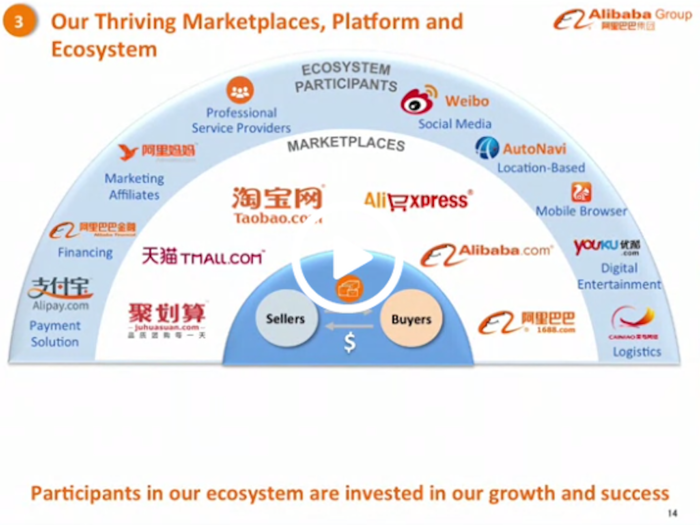
This has allowed Alibaba to "broaden their ecosystem" and capture additional users through expanded offerings.
Taobao, TMall, and Juhuasuan: Alibaba's three Chinese online retail marketplaces.
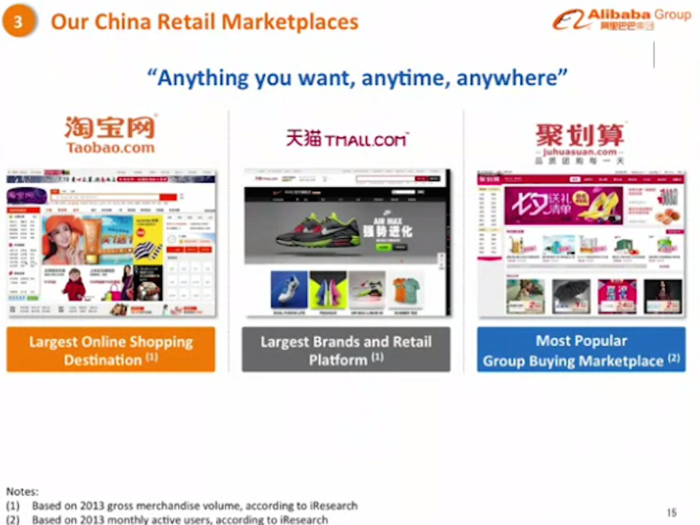
There several retail marketplaces:
Taobao - where consumers buy from retail market places of wide range of categories including “popular high-volume items and niche longtail goods.”
TMall - which satisfies the growing for international branded goods (think: Burberry, Elle Magazine) – and enables brands to engage with their customers.
Juhuasuan - which is a group buying market place featuring quality items are discount prices and flash sales.
1688.com is the leading wholesale marketplace in China.
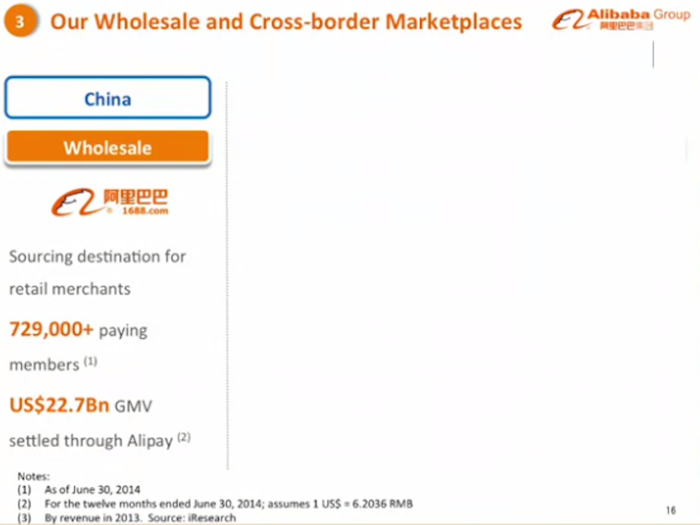
Alibaba.com is China's largest global online wholesale marketplace.
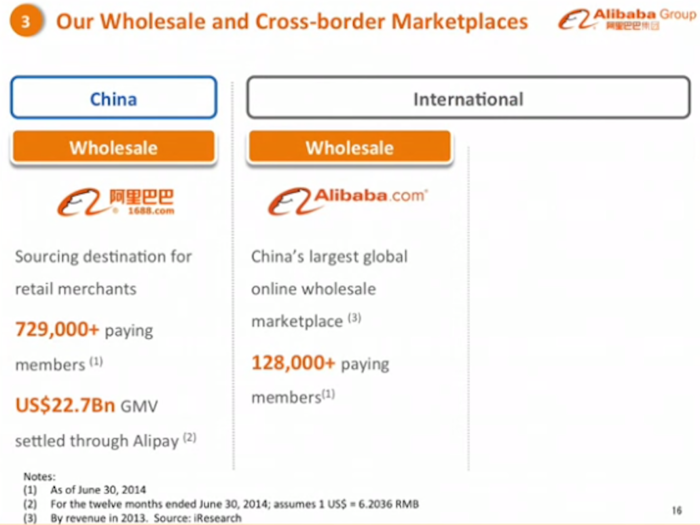
Alibaba.com generates revenue through memberships that lets users establish storefronts and list products
Ali Express is Alibaba's cross-border retail marketplace.
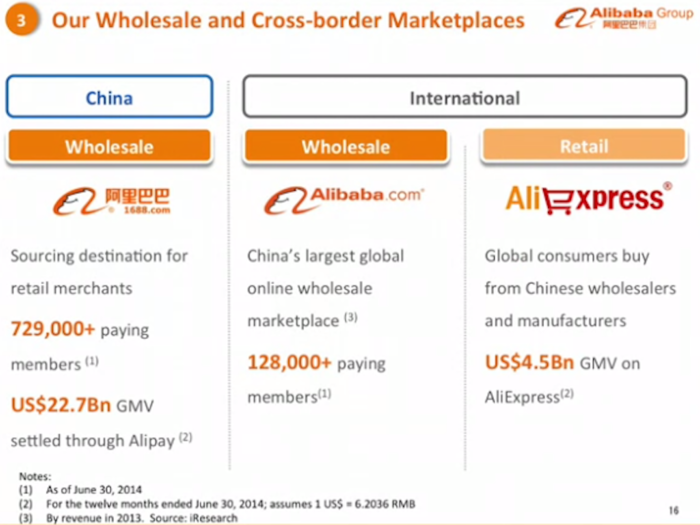
Alibaba's groups are all interconnected.
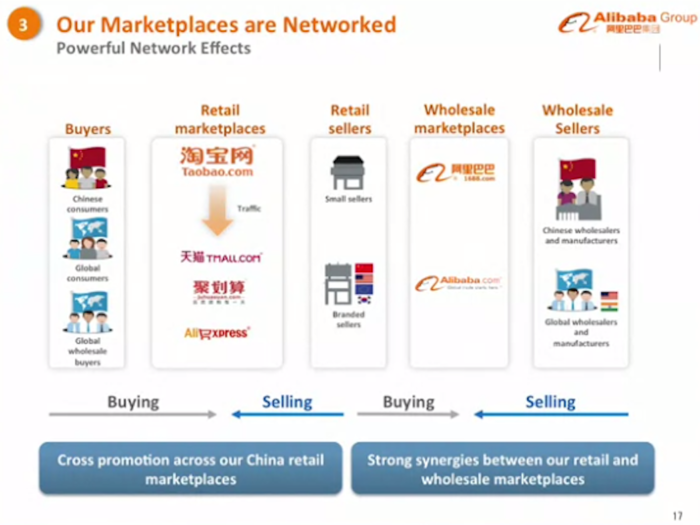
This is how they're connected.
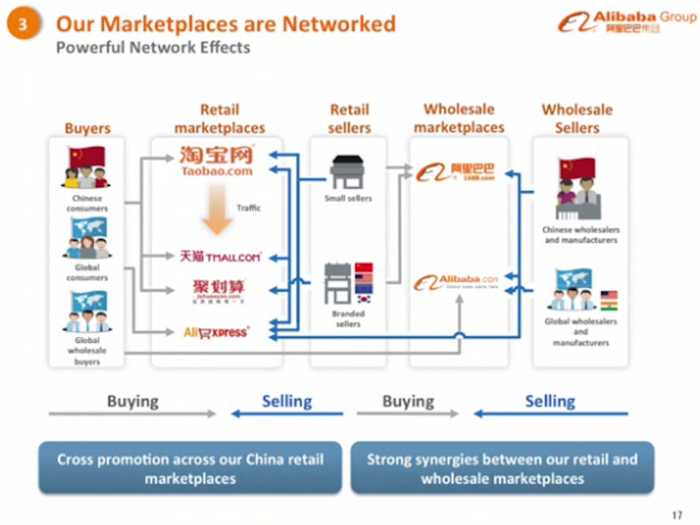
78% of transactions on the China retail marketplace were settled through AliPay.
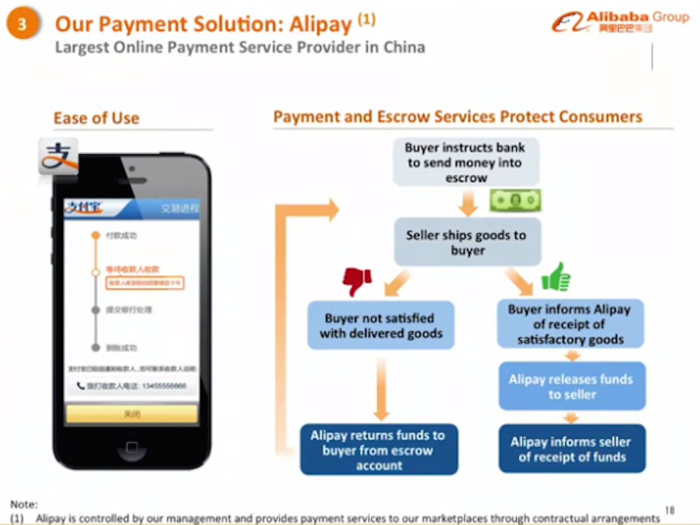
China has 127 cities with populations of over 1 million.
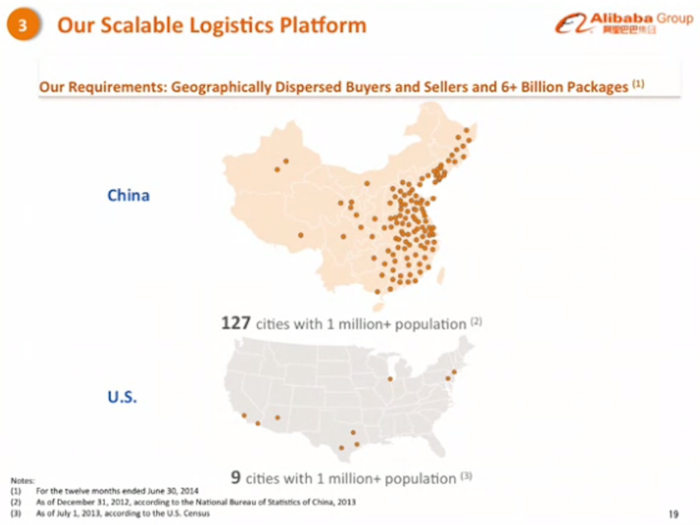
Over 52% of sellers on Alibaba for the fiscal year 2014 were outside of tier 1 and tier 2 Chinese cities.
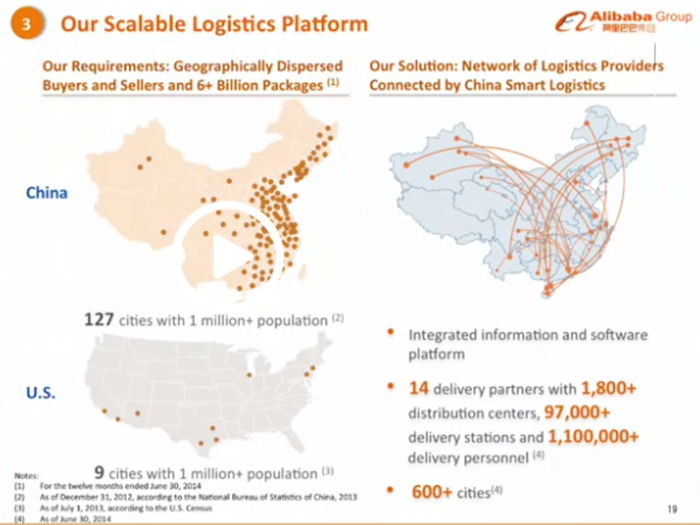
Alibaba works with 14 major companies that have delivery services to more than 600 cities through over 1,800 distribution centers in China.
The average delivery is 3 days.
Here's a look at Alibaba's Tech and Data Platform.
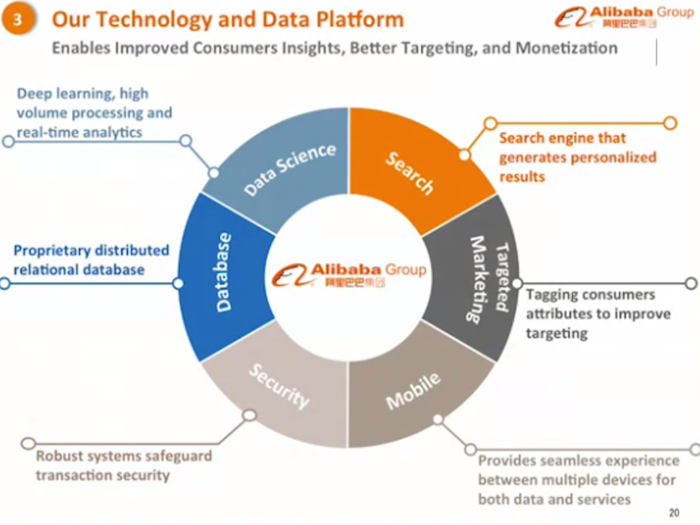
Over 1.4 million customers are using Alibaba Cloud Computing.
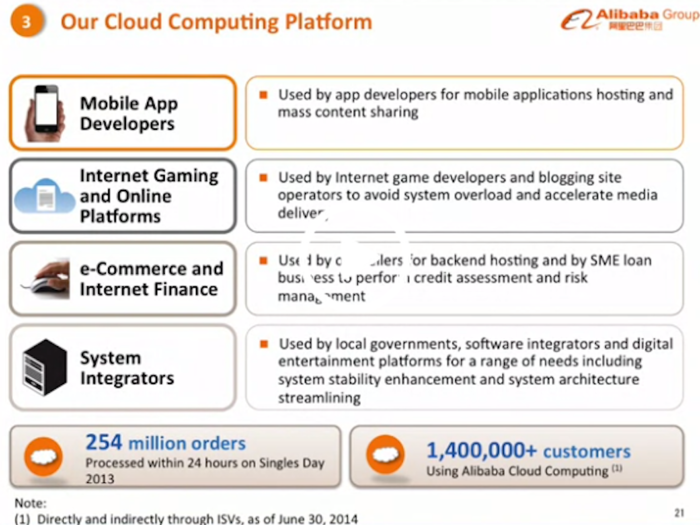
Mobile monthly users increased by 25 million in just three months.
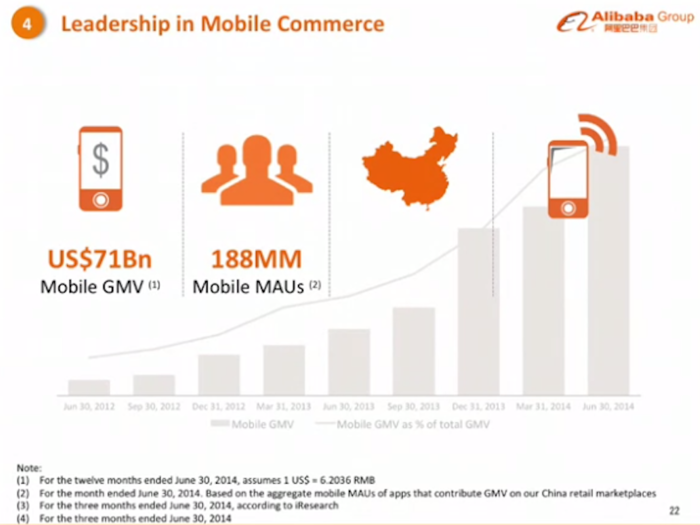
From March 2014 to June 2014, the users increased from 163 million to 188 million.
And mobile will continue to be a critical driver for the online shopping in China because "Chinese users live on mobile devices."
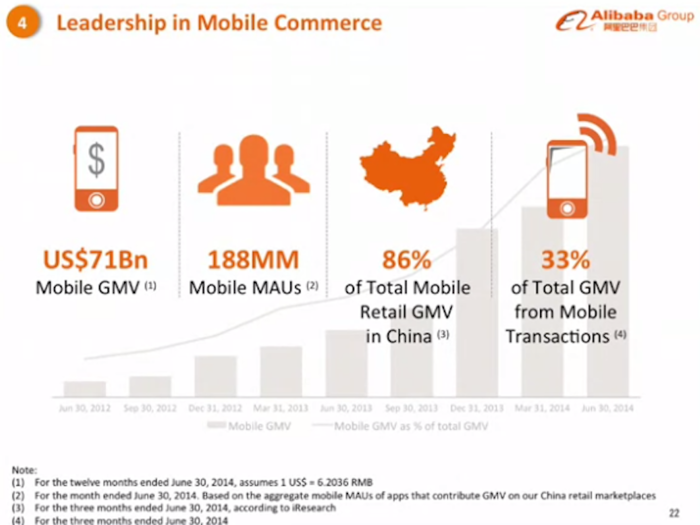
Alibaba has established dominance in numerous areas that will let them "execute the live at Alibaba strategy" on mobile devices.
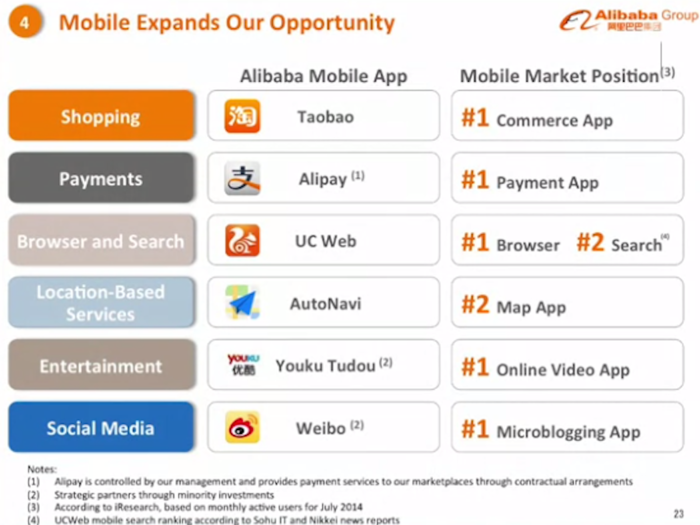
Here are Alibaba's key growth strategies.
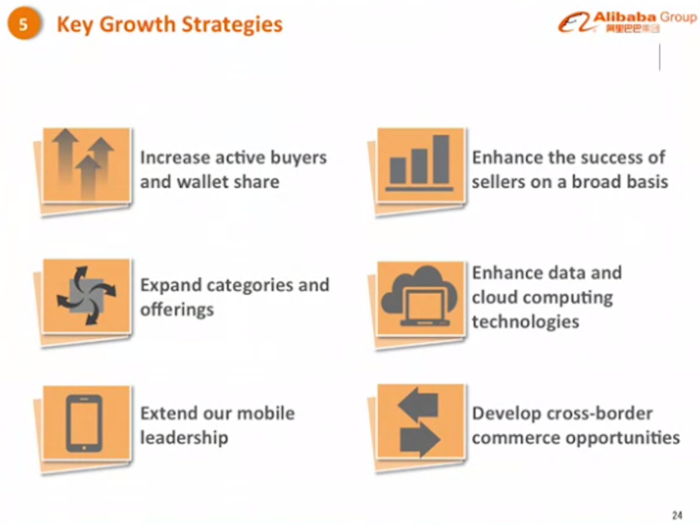
Management wants to expand categories and offerings — recently Alibaba began to look at groceries, entertainment, and local services.
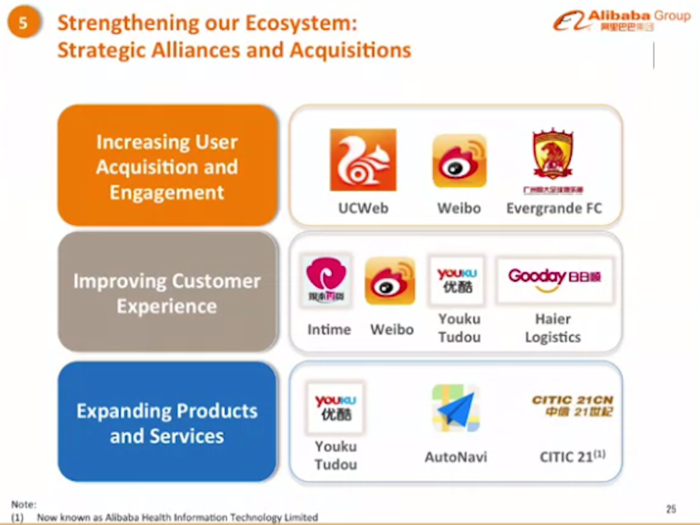
Thanks to acquisitions, Alibaba now owns the largest mobile browser in China which has 264 million active users globally.
Here is the restructured relationship with small and micro financial services company.
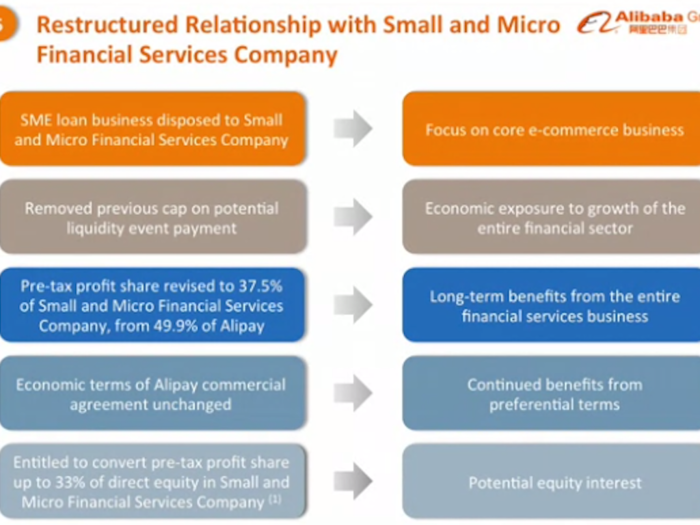
There is a "sense of mission" and confidence, and Alibaba is excited to take on growth.
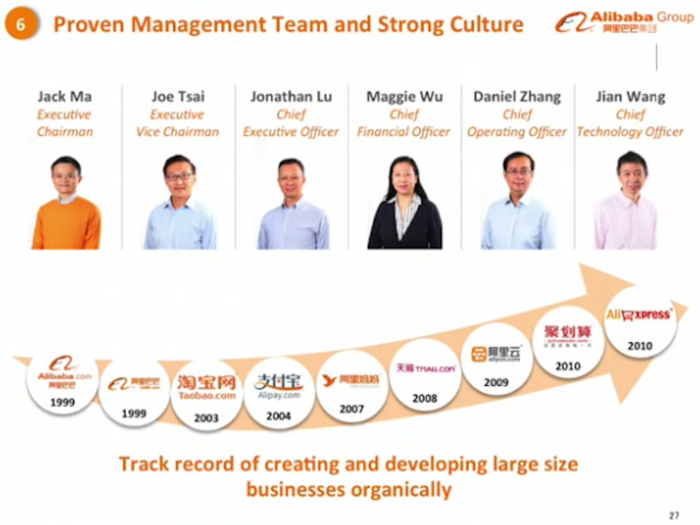
Here are some of Alibaba's financial strengths.
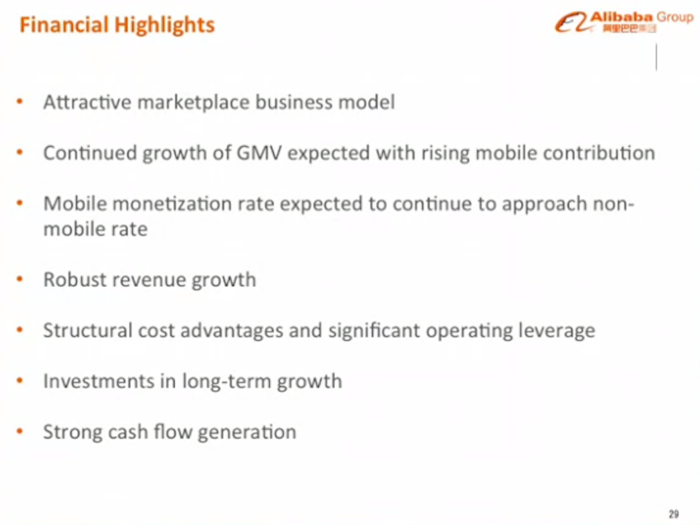
Alibaba operates as one ecosystem. Instead of having individual targets for various groups, they want everyone to focus on maximizing the success of the whole ecosystem.
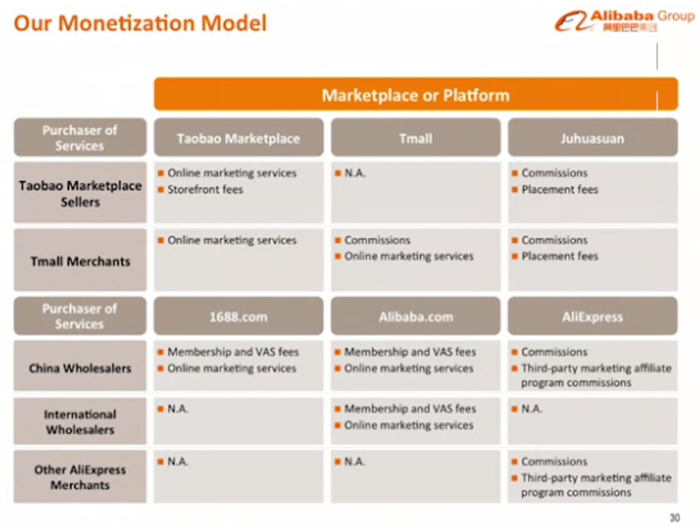
The number of active buyers increased from 185 billion to 279 billion from June 2013 to June 2014, and Alibaba expects the average spending per buyer to grow over time.
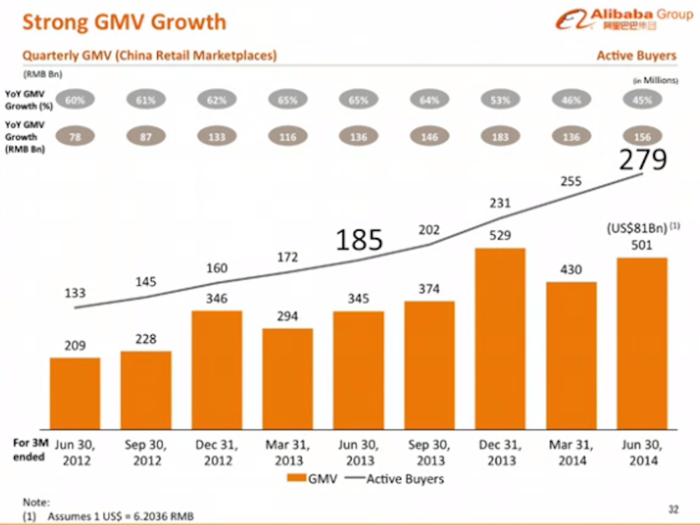
Mobile GMV grew to US$ 26 billion. And as a percentage of total GMV, mobile grew from 12% in June 2013 to 32.8% in June 2014.
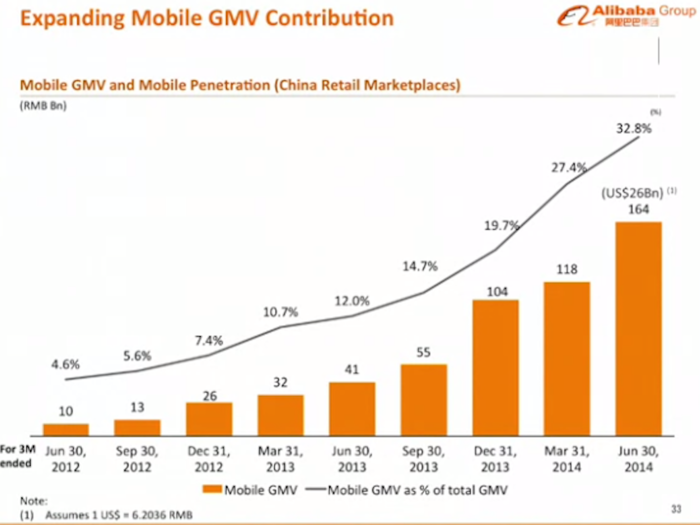
Alibaba also believes that there is a significant mobile monetization opportunity.
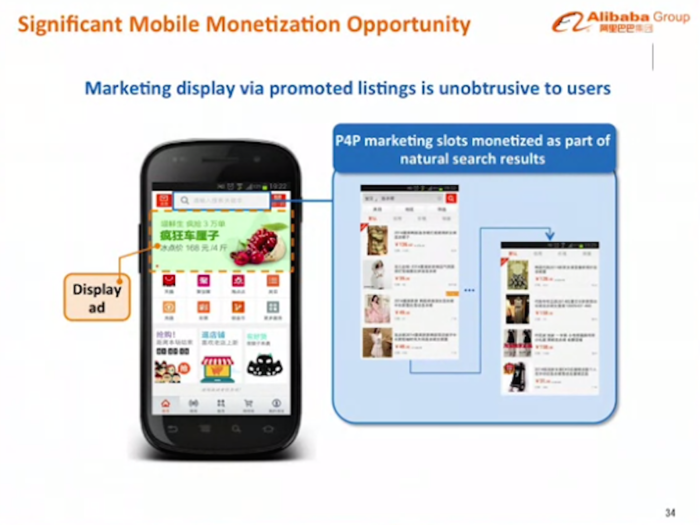
Mobile monetization grew to 1.49% in June 2014, from 0.58% a year earlier.
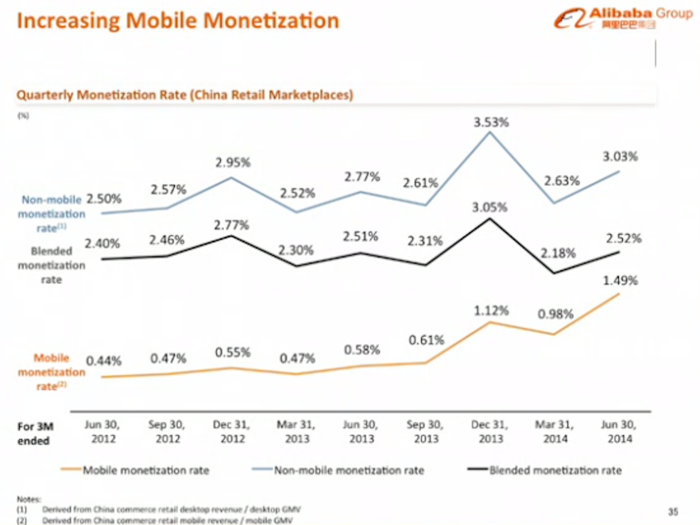
You will notice that mobile monetization is approaching non-mobile monetization (which is also increasing).
In the past 8 quarters, Alibaba has added an average of 22 billion RMB per quarter, and GMV has increased to 156 RMB (~US$ 25 billion) in the June 2013 quarter.
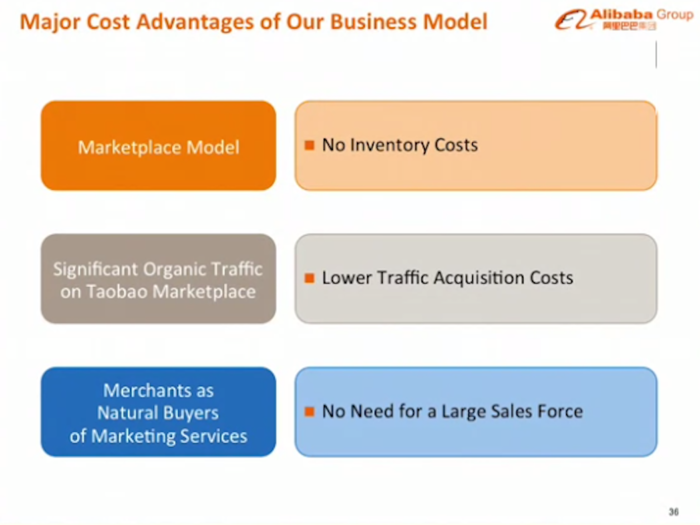
Revenue increased 52% in the fiscal year 2014, and 46% in the June 2014 quarter.
The structural cost advantage made significant investments to attract users, and to enhance experience (which you can see by the slight decline in marginal growth).
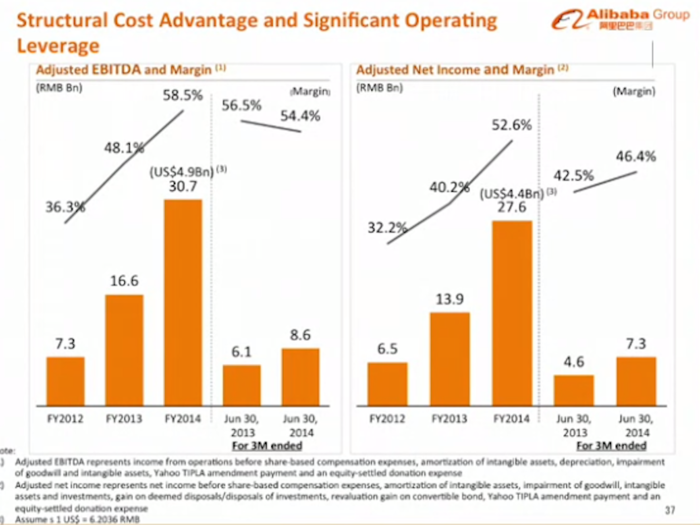
In fiscal 2014, free cash flows were at 32.3 billion RMB — which is approximately US$ 5.2 billion.
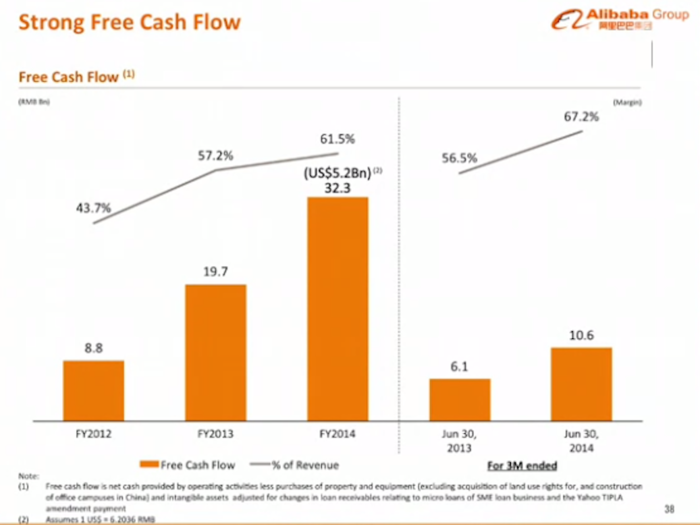
"We would be delighted for you to join us for the next chapters of our development," concluded Tsai.
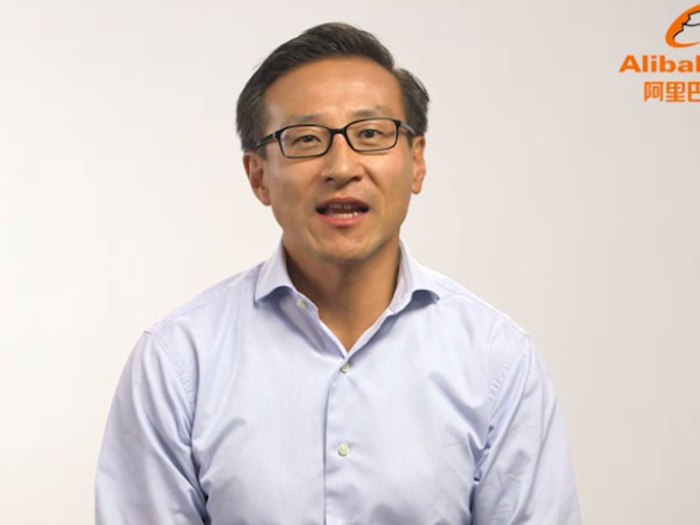
ALIBABA IPO ROADSHOW: Here's Why Jack Ma Thinks You Should Buy Into The Alibaba IPO

Popular Right Now
Popular Keywords
Advertisement